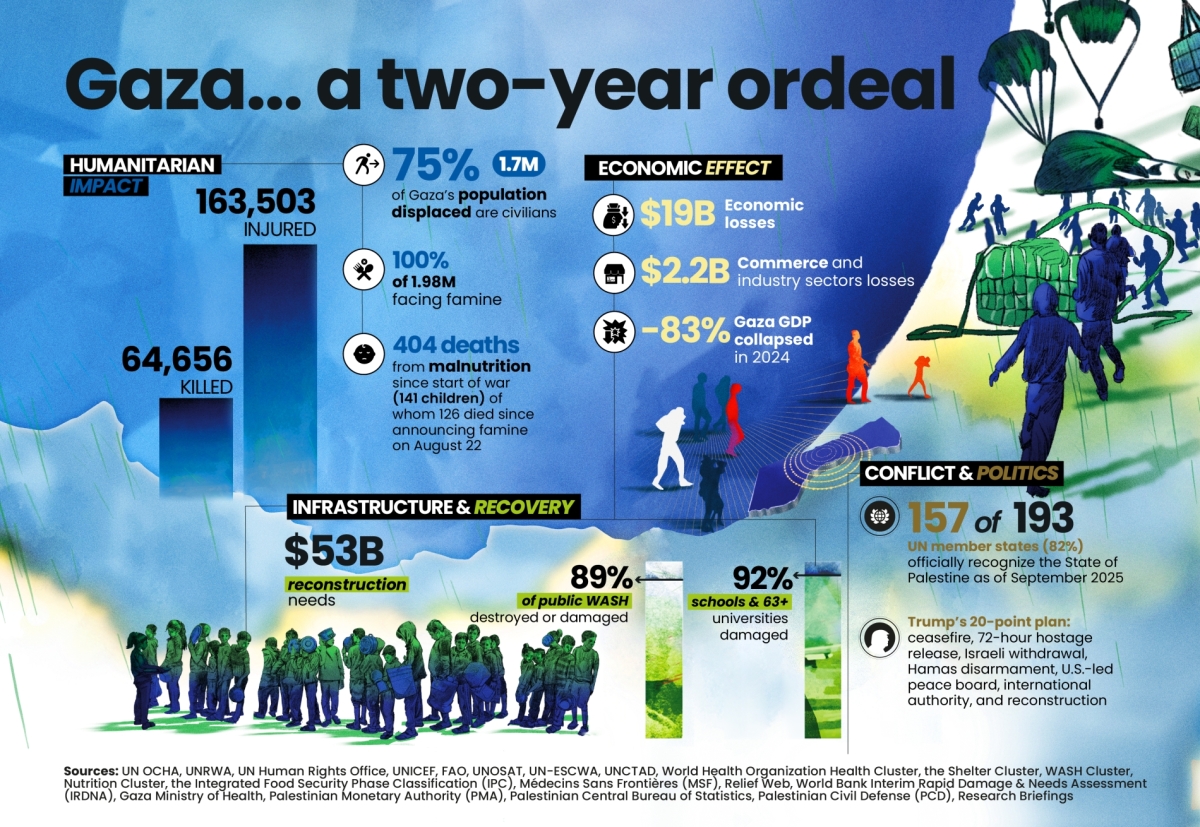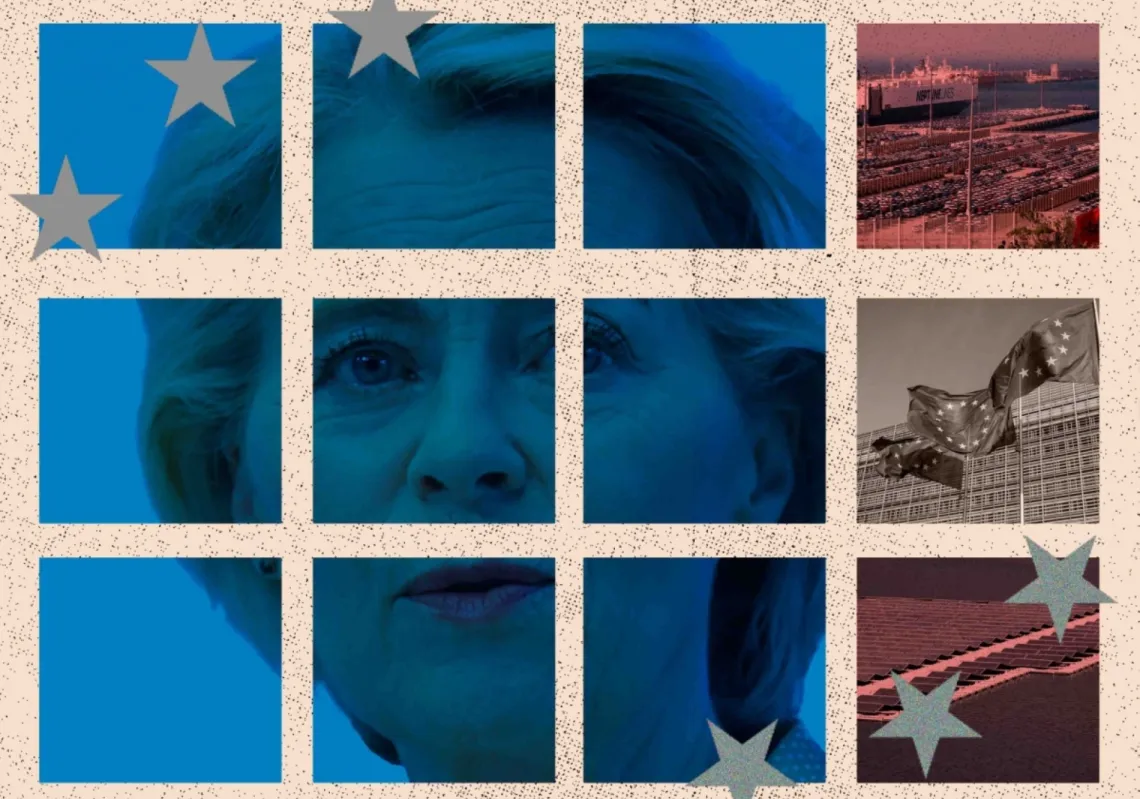Two years after the October 7, 2023, Hamas attacks, Israel has killed more than 64,500 Palestinians and injured over 163,500, the majority of them women and children, in what the UN has termed a genocide. Global affairs expert Emeritus Professor Paul Rogers from the University of Bradford says Israel's bombing of Gaza is 'equivalent to six Hiroshimas'. Indeed, satellite images from space show Gaza being a different colour and texture due to Israel's complete razing of entire neighbourhoods.
Israel has also systematically destroyed or damaged all of Gaza's hospitals, crippling their ability to treat the wounded and sick. It has also enforced a forced starvation campaign, severely restricting the amount of food and aid allowed into the Strip, killing hundreds, if not thousands, of Gaza's most vulnerable, like the elderly, the young and people with health conditions.
The economic toll is equally dire. Gaza’s economy has been decimated, with unemployment exceeding 80% and reconstruction needs surpassing $50bn. Israel, too, faces mounting economic pressure—ballooning defence expenditures, labour shortages, and investor uncertainty have weighed on growth.
Politically, the conflict has redrawn diplomatic lines. Outrage over Israel's genocide has led to the largest and most sustained global protest movement in history. This mounting public pressure has pushed many key Western governments to finally recognise a state of Palestine, although critics say it's too little, too late and more concrete action is needed to stop Israel.
Amid the deadlock, US President Donald Trump has unveiled a 20-point peace plan, setting deadlines for ceasefire talks and reconstruction. Yet scepticism runs deep. After two years of war, trust is scarce in Gaza’s shattered landscape.









